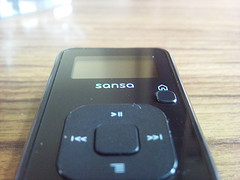
- Image by Touzeen Hussain via Flickr
[asa]B002MAPRYU[/asa]
We love the Sansa Clip. We bought a 1GB Clip refurbished a while back, and it replaced a slightly more sophisticated player with video playback capabilities. Sometimes, simplicity is more useful. Now, we’ve replaced our 1GB Sansa Clip with a new Sansa Clip Plus(or Clip+).
The Plus offers a slightly sturdier construction, the buttons have been reorganized, and one big new feature…a microSDHC slot for expansion. It also contains the features that we loved about the Clip.
- It can play FLAC and OGG files.
- It has good Podcast and Audiobook support.
- The sound quality is good.
- It is REALLY small
- It has a screen, something the Shuffle lacks
- It has a built in FM radio
We commented on the Clip+ when it first came out. Sandisk advertises the expansion slot as a slotMusic slot. slotMusic and slotRadio were Sandisk’s attempt at selling preloaded microSD cards, which we still insist, on the face of it, is not a bad idea, but never took off. Sandisk’s implementation was not quite what we thought would work. We’d like to see an on-demand kiosk that would allow you to buy files, load them onto the little card, and that could be available in airports and music stores.
That aside, the Clip form factor is the perfect size for sticking into a bag. Everyone we’ve shown it to, even iPod lovers, have agreed that if you are looking for a simple, utilitarian, good quality music player, the Clip is superior to the iPod shuffle and to many other players on the market in similiar price ranges. For those who are Linux users, or like a simple interface, the Clip offers easy loading of new music by copying it over a USB cable. The jack built-in is a standard Mini-USB jack, as opposed to any proprietary plug.
It relies on ID3 tagging to allow you to browse for files to play, but offers Playlist(created on your computer not the device, although this may change), and an folder browse mode to allow you to select by the directories you have put on the device. When we bought it, there was already a new firmware we could load on, which gives us hope Sandisk will continue to maintain it. AnythinButiPod has a list of possible firmware improvements.
They also show how you can get a microSD to SD converter to, with a corresponding increase in size, get cheaper SD as opposed to microSD memory for the Clip.
Elsewhere, the Clip V1 has unstable support for the Rockbox alternative music firmware and other versions may come someday.
The only complaint we could see having about it is that it is so small, it is easy to lose. We’ve narrowly avoided misplacing it a few times for that reason. But a device being too portable is the sort of complaint we can live with.
Update: There is a newer version of the Sansa Clip, called the Sansa Clip Zip. Have not tried it, but the link appears below.
[asa]B005FVNGRS[/asa]
Related articles by Zemanta
- Sandisk Sansa Clip Plus (ubergizmo.com)
- Gadling gear review – Sandisk Sansa Clip+ MP3 player (gadling.com)
- SanDisk adds expansion slot to Sansa Clip+ (seattlepi.com)
- SanDisk Sansa Clip+ gets torn down, presumably built back up again (engadget.com)






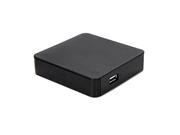



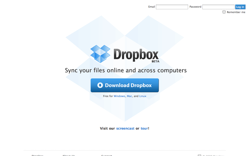

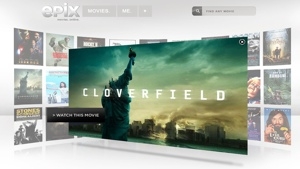


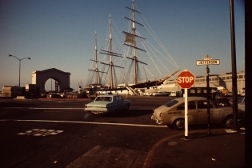



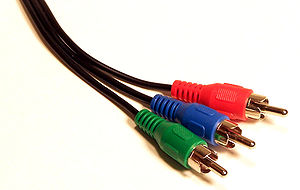



![Reblog this post [with Zemanta]](http://img.zemanta.com/reblog_c.png?x-id=b91992a3-5e0d-4006-a804-e3c6b2d46fc3)


![Reblog this post [with Zemanta]](http://img.zemanta.com/reblog_c.png?x-id=60c6b877-446a-4fb0-ab6b-8e4910c5db54)


![Reblog this post [with Zemanta]](http://img.zemanta.com/reblog_e.png?x-id=4d1d8594-f904-4c7a-942c-bb8fc29bfdda)